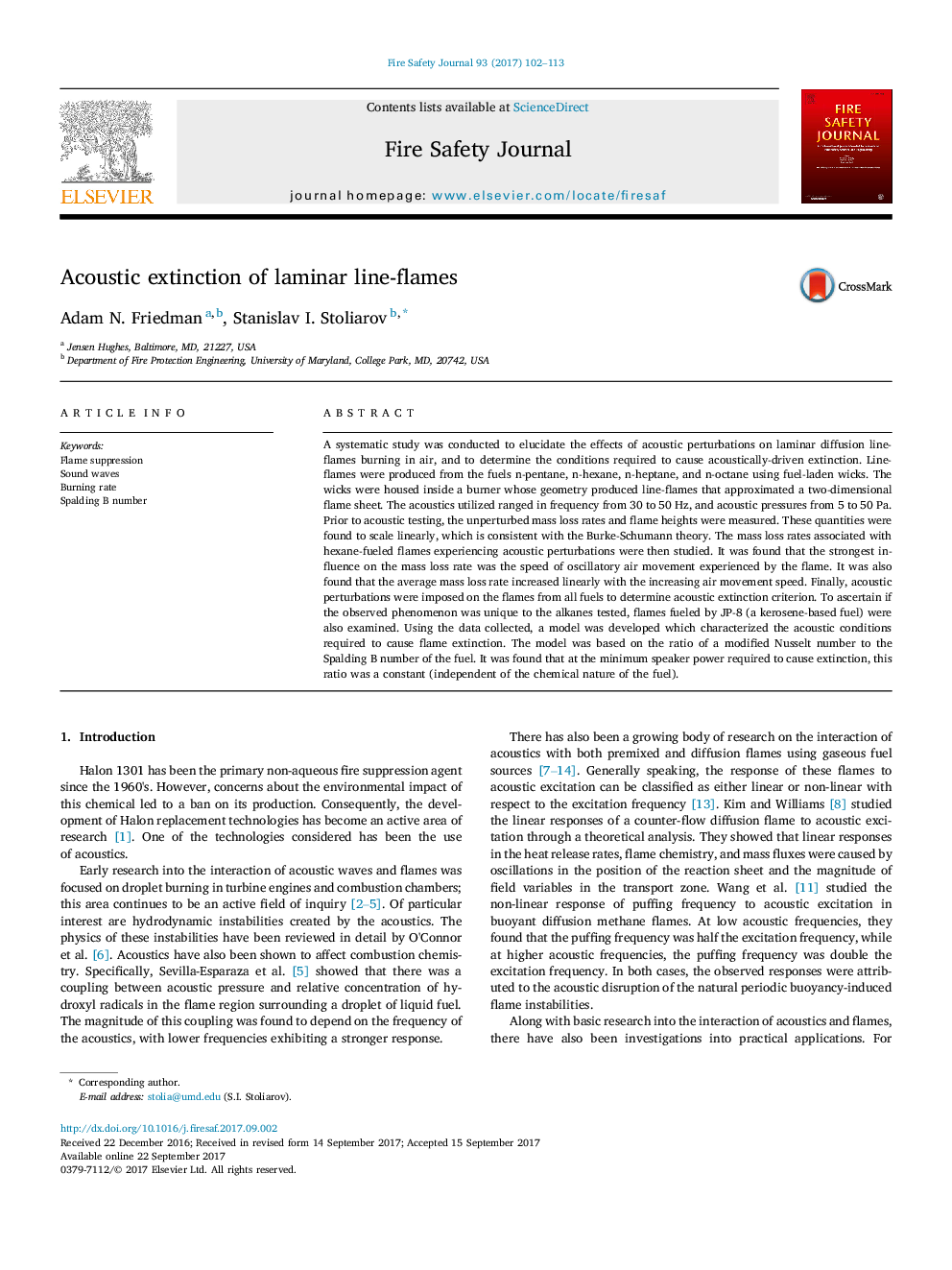| Article ID | Journal | Published Year | Pages | File Type |
|---|---|---|---|---|
| 4920824 | Fire Safety Journal | 2017 | 12 Pages |
Abstract
A systematic study was conducted to elucidate the effects of acoustic perturbations on laminar diffusion line-flames burning in air, and to determine the conditions required to cause acoustically-driven extinction. Line-flames were produced from the fuels n-pentane, n-hexane, n-heptane, and n-octane using fuel-laden wicks. The wicks were housed inside a burner whose geometry produced line-flames that approximated a two-dimensional flame sheet. The acoustics utilized ranged in frequency from 30 to 50Â Hz, and acoustic pressures from 5 to 50Â Pa. Prior to acoustic testing, the unperturbed mass loss rates and flame heights were measured. These quantities were found to scale linearly, which is consistent with the Burke-Schumann theory. The mass loss rates associated with hexane-fueled flames experiencing acoustic perturbations were then studied. It was found that the strongest influence on the mass loss rate was the speed of oscillatory air movement experienced by the flame. It was also found that the average mass loss rate increased linearly with the increasing air movement speed. Finally, acoustic perturbations were imposed on the flames from all fuels to determine acoustic extinction criterion. To ascertain if the observed phenomenon was unique to the alkanes tested, flames fueled by JP-8 (a kerosene-based fuel) were also examined. Using the data collected, a model was developed which characterized the acoustic conditions required to cause flame extinction. The model was based on the ratio of a modified Nusselt number to the Spalding B number of the fuel. It was found that at the minimum speaker power required to cause extinction, this ratio was a constant (independent of the chemical nature of the fuel).
Related Topics
Physical Sciences and Engineering
Engineering
Civil and Structural Engineering
Authors
Adam N. Friedman, Stanislav I. Stoliarov,
